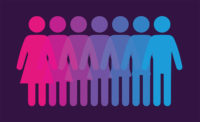2015 marks the end of mass and the rise of the individual

From ultra-personalized experiences to custom packaging to straightforward dialogue, 2015 will be the year where the consumer truly reigns supreme. Landor (landor.com), one of the world’s leading strategic branding and design firms, analyzed innovations, changes, consumer behaviors, and attitudes from a multitude of industries and global locales and emerged with insights for the coming year that signal a shift away from the mass and a definitive move toward the niche.
Thomas Ordahl, Landor’s chief strategy officer, commented, “The brands of 2015 will be more agile, changing and adapting to meet the specific needs of individual consumers. Whether it’s creating custom packaging or using input from social media to improve a product, companies will embrace the power of one like never before.”
Here are Landor’s key trends for 2015:
The individual, not the masses, becomes the brand target: Thanks to epic advances in capturing consumer data and breakthrough manufacturing techniques that make smaller production runs more economical, businesses will create specialized offers and subbrands to meet consumers’ desires for personalized products. For example, Coca-Cola Israel recently printed 2 million individually designed labels to prove its consumers are one of a kind. And, Holiday Inn is starting to shift its brand strategy toward more customized experiences that meet individual needs—from business travelers and families to young couples and adventurous singles.
3-D goes beyond movies: The advent of 3-D printing technology enables brands to forgo uniform packaging in favor of creating custom designs to connect with consumers and stand out on store shelves. Captain Morgan 1671 special-edition blend took this approach and exceeded sales expectations with a distinctive pirate-shaped and weathered glass jug.
The name game, short and simple:With more noise in the digital marketplace and less time than ever to capture consumers’ attention, brands will continue to streamline the path to sales and that includes a shift back to basic, clear, relevant naming solutions. More monikers will have universal, easy-to-grasp concepts (think Uber and Square) that also make good URLs. Apple, who dropped its iconic “i” naming convention, and Google have already transitioned to this elementary approach, putting greatest importance on their recognizable master brands by placing them first, followed by simple product descriptors: Apple Watch, Apple TV, Apple Pay; Google Glass, Google Wallet, Google Play.
Brands as your best friends: Good-bye slogans and catchphrases. Today you can’t sell without a story—and it better be authentic. Whether it’s websites, tweets, or texts, brands will use straightforward dialogue infused with honesty and emotion. We’re talking plain, straightforward honesty in communications—like Zipcar who has zoomed past the rental car competition with an approachable voice that speaks like your best bud.
What’s in your…phone?: With the launch of Apple Pay, financial brands risk fading out of consumers’ minds as they stop reaching for their logo-stamped cards to pay for goods. Financial institutions will have to come up with creative solutions to sustain relationships and remain indispensable to consumers. Complicating matters are apps allowing consumers to manage their own finances, such as Mint.com and DIY wealth management planner, Betterment.com.
TMI is not too much: Label reading, facts-up-front, brand origin stories. In the new world of branding, there’s no such thing as TMI. Consumers want the full behind-the-scenes narrative to make informed decisions and buy value-resonating products. To meet this demand, brands are transforming their packaging to make it quick, clear, and easy for consumers to learn all they can about their products. Stone Creek Coffee’s popular Lab Series goes so far as to include the elevation, harvest date, and name of the farmer who grew the beans.
Looking for a reprint of this article?
From high-res PDFs to custom plaques, order your copy today!









